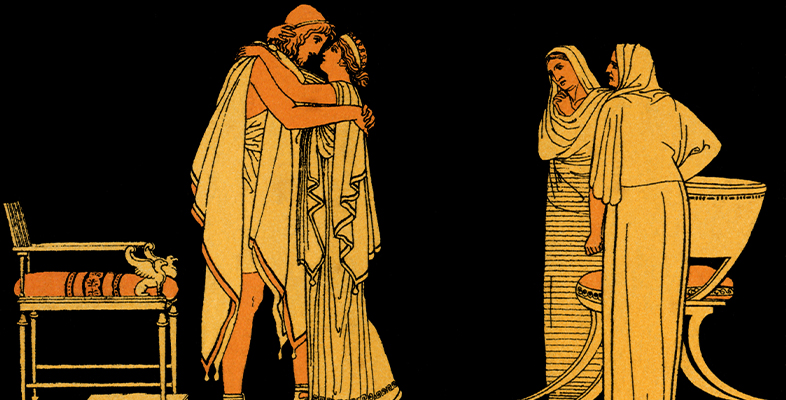3.4 Exploring Penelope’s story
You have already spent some time thinking about the silencing of Penelope in the Odyssey, and about how her experience in the poem compares with that of her husband Odysseus. As the main focus of the poem is Odysseus and his adventures, we need to examine the story Homer tells a little more closely to get a sense of Penelope’s character. In Activity 6 you will find out more about the way in which Homer depicts Penelope, and how this compares with the way in which Odysseus is represented.
Activity 6
Listen to the audio recording, in which Emma Bridges talks to Christine Plastow about the character of Penelope in the Odyssey.
Listen to it as many times as you wish and answer the following questions:
- What descriptive words, or adjectives, does Christine Plastow use to describe Penelope’s character? Pick out two or three from the discussion.
- As a woman in a patriarchal society (that is, a society which is ruled by and for men), how does Penelope use the tools at her disposal to exert some control? Write a sentence or two in your response.
- What problems does Penelope face while Odysseus is away? Try to come up with a list of three or four bullet points.
- What similarities between Penelope and her husband Odysseus does Christine Plastow identify? Write one or two sentences in your response.
Transcript
Discussion
- You may have chosen something like ‘cunning’, ‘cautious’, or ‘powerful’.
- By devising the shroud trick (weaving and unpicking a shroud as a way of delaying the decision to marry the suitors), Penelope uses a skill – textile making – which is normally associated with women in the ancient world as a way of exerting control.
- Your list might contain the following problems:
- Penelope is worried about whether Odysseus is alive or dead, and there is no reliable way of knowing whether he will come home.
- She has to manage the household in her husband’s absence.
- She needs to decide whether or not to marry one of the suitors, who are behaving very badly.
- The lack of news she has about Odysseus, including not knowing whether he is still alive.
- Christine Plastow suggests that Penelope shares cunning, intellect and resourcefulness with her husband Odysseus. Both are problem solvers who, when faced with challenges, try to find solutions.
One word which came up on the audio discussion which you probably had not heard before is the Greek word ὁμοφροσύνη (homophrosunē), which is sometimes translated as ‘likemindedness’. When Odysseus meets – and flirts with – the Phaeacian princess Nausicaa on his travels, he uses this term in his description of what makes an ideal marriage (6.182-5). There is a sense throughout the poem that, although Odysseus and Penelope undergo very different experiences, they exhibit similar qualities such as resourcefulness and persistence in the face of the challenges they encounter.
In the next section you will find out more about what happens when Odysseus and Penelope are eventually reunited.
